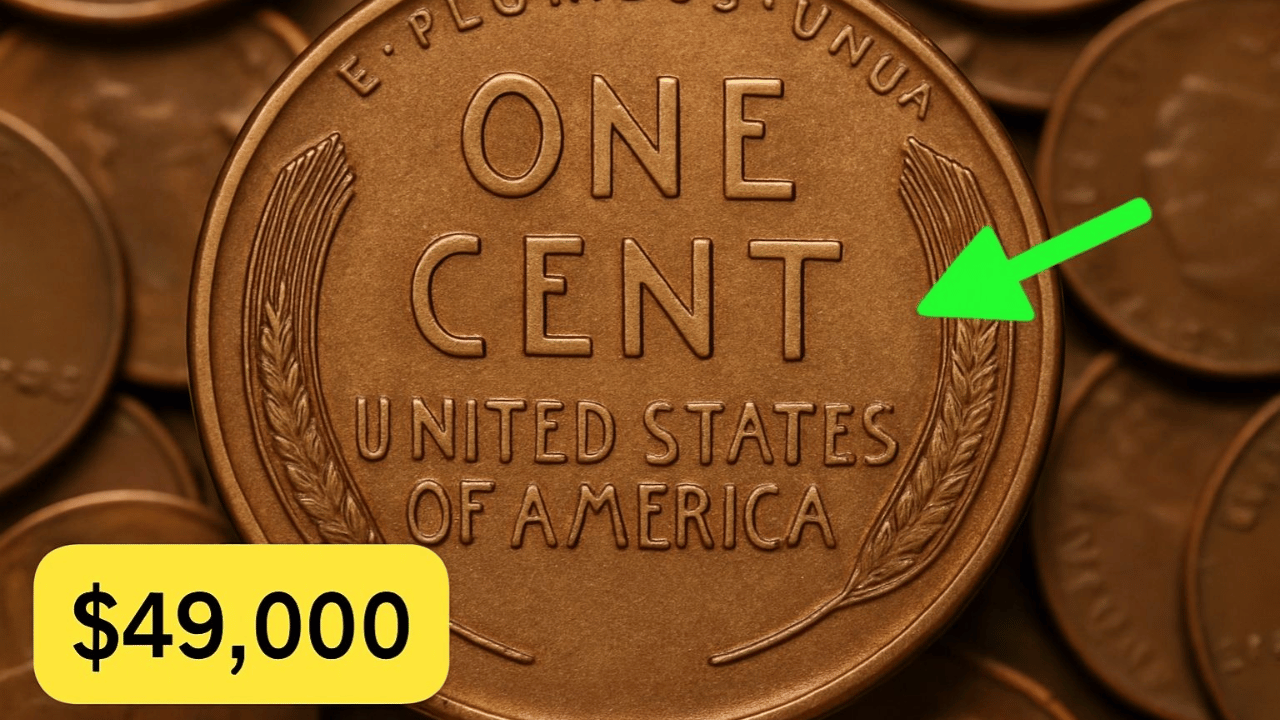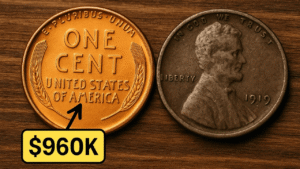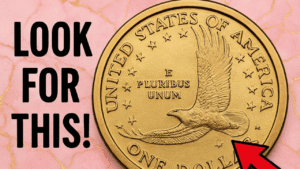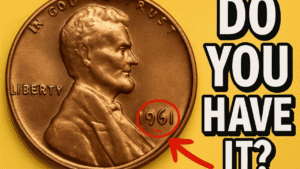Ever stare at a penny and think, “Eh, just one cent”? Yeah, well, that same beat-up coin might be worth more than your car. Or your mortgage. Or both. Wild, right? Let me tell you a story so absurd, so almost unbelievable, it sounds like a Reddit conspiracy theory—but it’s 100% legit.
The Penny That Shouldn’t Exist… But Does
Alright, rewind to 1943.
World War II was raging. The U.S. needed copper for ammo and equipment. So, in a classic example of wartime ingenuity, the Mint made pennies out of steel coated in zinc instead of copper. Gave ’em a silvery look—pretty cool, kinda weird.
But here’s where it gets freaky.
A few rogue copper blanks somehow slipped through the cracks—literally—at the Mint. They were accidentally struck as 1943 copper Lincoln Wheat Pennies.
Boom. A minting mistake for the ages.
Nobody meant to make them. The government wasn’t supposed to make them. But it happened.
And because of that happy little accident? Those copper 1943 pennies are now the holy grail of U.S. coin collecting.
Steel vs. Copper: Know Your Metal
Let’s break this down like you’re staring into your junk drawer trying to ID that mysterious penny.
| Feature | Steel 1943 Penny | Copper 1943 Penny |
|---|---|---|
| Color | Silvery, gray-ish | Brownish, reddish |
| Magnetic? | Yes (sticks to magnet) | No (non-magnetic) |
| Estimated Value | 10¢ – $1 | $49,000 – $1,700,000+ |
| Material | Zinc-coated steel | Bronze (mostly copper) |
| Rarity | Common (over a billion made) | Ultra-rare (fewer than 20 known) |
If your 1943 penny looks like it belongs on a necklace in a steampunk cosplay—shiny, silver, magnetic—sorry. It’s steel. Keep it if you like the look, but it won’t buy you anything fancy.
But if it’s a warm, coppery tone and doesn’t stick to a magnet? Now we’re talking.
So… What’s the Catch?
Yeah, there’s always a catch. A few, actually:
- Most “copper” pennies from 1943 are just fakes. Either plated steel or altered dates.
- You need authentication. Send it to PCGS or NGC (the coin world’s version of NASA).
- Never clean it. I know, it’s tempting. But collectors value original grime more than your effort to “make it shine.”
- Condition matters. That’s what determines whether it’s worth five figures or seven.
And hey—no pressure—but one guy did sell his for $1.7 million. Just saying.
Real People. Real Stories.
A 14-year-old found one in pocket change. Sold it for $40,000. Another guy inherited a box of junk coins from his grandpa—turned out one of them was worth six figures.
Oh, and there’s the infamous story of someone using one to buy lunch. That sandwich probably cost him $100K.
This stuff isn’t fantasy—it just feels like it because of how rare it is.
How to Check (Without Getting Scammed)
Here’s a chill, no-BS way to find out if you’re holding a goldmine in disguise:
- Color check – Brown/coppery? Good start.
- Magnet test – If it sticks, it’s steel. Move on.
- Look at the date – Must say 1943. Not 1948 scratched up to look like it.
- Don’t scratch or polish it – Resist your inner clean freak.
- Send it to a grading service – PCGS (Professional Coin Grading Service) or NGC (Numismatic Guaranty Company).
They’ll examine, grade, and authenticate the coin. If it’s legit, you’ll get a fancy little slab with its info—and then you can start dreaming about how you’ll spend the money.
Yeah, But What Are the Odds?
Bad. Real bad.
Worse than finding a four-leaf clover. Worse than getting hit by lightning twice in one year while holding a winning lotto ticket and being discovered as a model at Target.
But—and here’s the crazy part—not zero.
And when the prize is close to a million bucks… well, suddenly that coin jar starts looking real suspicious, huh?
Don’t Have One? Here’s the Next Best Thing
Okay, maybe your 1943 penny is boring old steel. That’s fine.
If this got you interested in coin collecting, great. It’s a weird little rabbit hole that’s surprisingly fun. You can start by looking for error coins, old mint marks, or pre-1982 copper pennies (they’re worth more than face value due to metal content).
At the very least, next time someone shrugs off a penny, you can hit them with:
“Yeah, but did you know one sold for $1.7 million?”
You win the conversation.
FAQs
I have a 1943 penny, but it looks steel—should I still check it?
Sure, do the magnet test. If it sticks, it’s steel—worth maybe a dime. Still fun, though.
Can I sell it myself online?
You could, but scammers lurk. Go through a certified coin dealer or major auction house.
What if the date looks tampered with?
Likely a fake. Some folks shave down 1948s to look like 1943s. Experts can spot this.
How many of the copper ones are out there?
Estimated 15–20 confirmed, but who knows how many are still hiding in jars and drawers?



